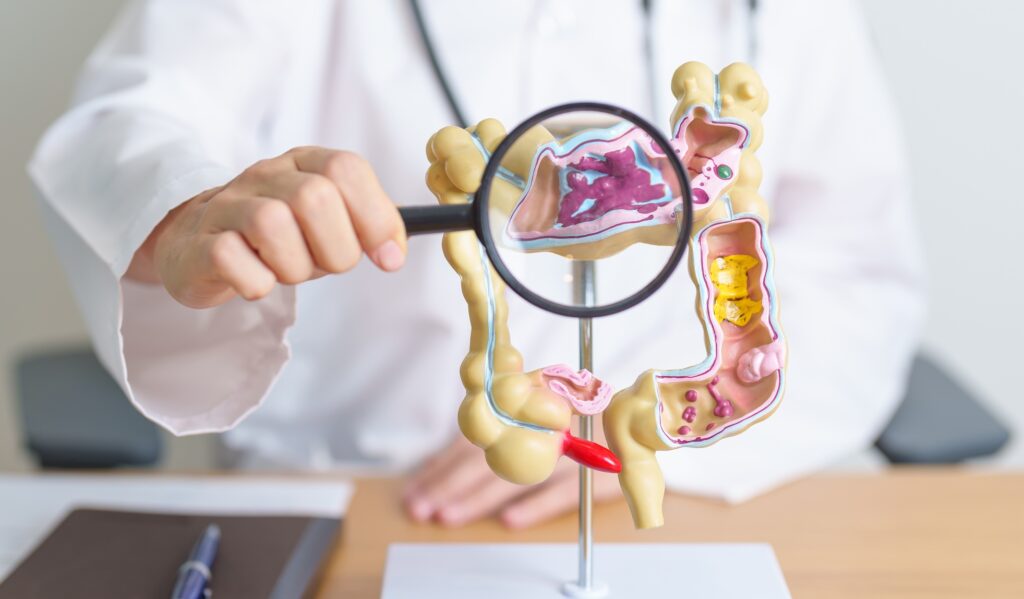Scientists from École Polytechnique Fédérale de Lausanne (EPFL) have developed a first-of-its-kind ingestible bioprinter capable of navigating the gastrointestinal (GI) tract and depositing bio-ink directly onto ulcers or hemorrhages. The new device, which is roughly the size of a drug capsule, is called the Magnetic Endoluminal Deposition System (MEDS) and functions like a tiny ballpoint pen, dispensing a biogel through a spring-loaded plunger onto the tissue needing repair. Details of this new technology are published in the journal Science Advances.
“By combining the principles of in situ bioprinters with the drug release concepts of smart capsules, we can envision a new class of device: a pill-sized, swallowable bioprinter,” said senior author Vivek Subramanian, PhD, of EPFL’s Laboratory for Advanced Fabrication Technologies.
Once the MEDS capsule swallowed, it is guided to the site of treatment using external magnets and the plunger activated using near-infrared (NIR) light to deposit bio-ink onto tissue inside the body.
Currently, soft tissue injuries in the GI tract are typically require invasive procedures, which can cause a host of of complications, and may not even lead to lasting tissue repair. While existing bioprinting systems have shown promise in enabling cell growth through direct printing of biocompatible materials onto tissue damage, they carry some of the same limitations.
“Existing tissue engineering approaches include injectable hydrogel dressings, decellularized extracellular matrix xenografts and invasive implantation of ex situ bioprinted extracellular matrix scaffolds, all of which require invasive surgery,” the researchers wrote.
MEDS addresses several limitations of both traditional surgical repair and current bioprinting methods. It eliminates the need for anesthesia, physical tethers, or onboard electronics. The system instead uses a magnet-on-robotic-arm setup outside the body to steer the capsule along the tissue wall and deposit bio-ink precisely on the wound surface.
In lab experiments, MEDS successfully repaired simulated ulcers and sealed mock hemorrhages on artificial tissue. In further animal studies conducted in vivo, the MEDS capsule deposited bio-ink inside the stomach using real-time fluoroscopy to guide the procedure. When the procedure was completed, the team used magnetic guidance to retrieve the capsule orally.
“In our controlled lab experiments, our cell-laden bio-ink retained its structural integrity for over 16 days, suggesting its potential as a ‘micro-bioreactor’ that can release growth factors and recruit new cells for wound healing,” said first author Sanjay Manoharan, a PhD candidate working in the Subramanian lab at EPFL.
The data from the study of MEDS indicates that bioprinted material could provide both physical protection from gastric fluids and a biological environment for regenerative healing.
The researchers also noted that the MEDS capsule has advantage over other ingestible medical devices for these applications. Many ingestibles are designed to float in fluid. But this characteristic has made it challenging to guide them to the tissue needing treatment. MEDS, however, was designed specifically to move across and interact with the tissue wall, allowing the contact needed for effective bioprinting. To do this, the EPFL team modeled the magnetic forces and tissue surface interactions to develop controlled “stick-slip” dynamics that allowed for accurate an predictable internal navigation of the capsule.
“This work thus establishes core engineering principles for future development of non-invasive and untethered endoluminal bioprinting systems,” the researchers wrote.
If approved for medical use, the implications for clinical care are significant. GI diseases cause more than 2.5 million deaths globally each year, a large portion of them linked chronic conditions such as inflammatory bowel disease and ulcerative colitis. Today, treatments for these conditions often focus on symptom management rather than tissue regeneration. Further, “Unlike monocultures, where rapid proliferation leads to nutrient depletion and apoptosis, alginate’s slower proliferation supports long-term viability,” the researchers noted, suggesting that long-lasting therapeutic benefit could be possible by optimizing the bio-inks used for treatment.
The EPFL researchers will now look to access deeper organs by expanding the working range of the magnetic guidance system through using either stronger magnets or Halbach arrays. The team is also exploring algorithmic path planning and sensor-based feedback to allow for more autonomous navigation the GI tract. They will also work to develop new bio-inks that have better adhesion properties and then test therapeutic efficacy in live disease models.
“Despite the limitations, this foundational work represents a significant step forward compared to the current bolus drug release ingestibles,” the researchers wrote. “By uniting the worlds of ingestibles and bioprinting, we realize the vision of a pill that prints, which opens paths to future ingestibles that do not just deliver molecules, but actively construct tissue in the very spaces where disease took hold.”

